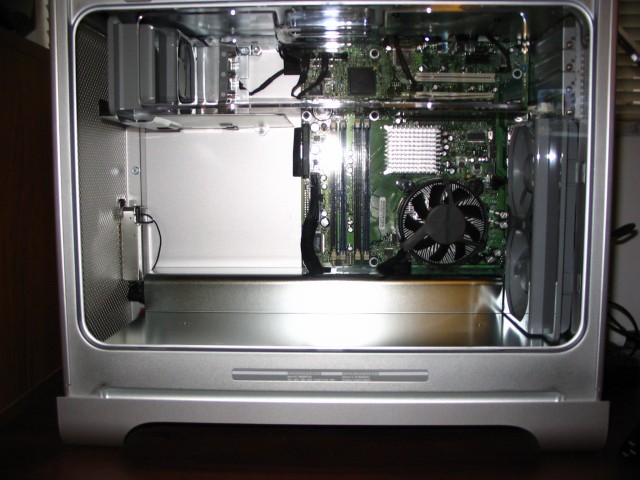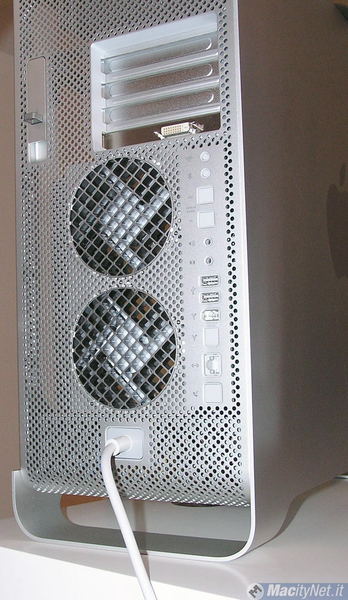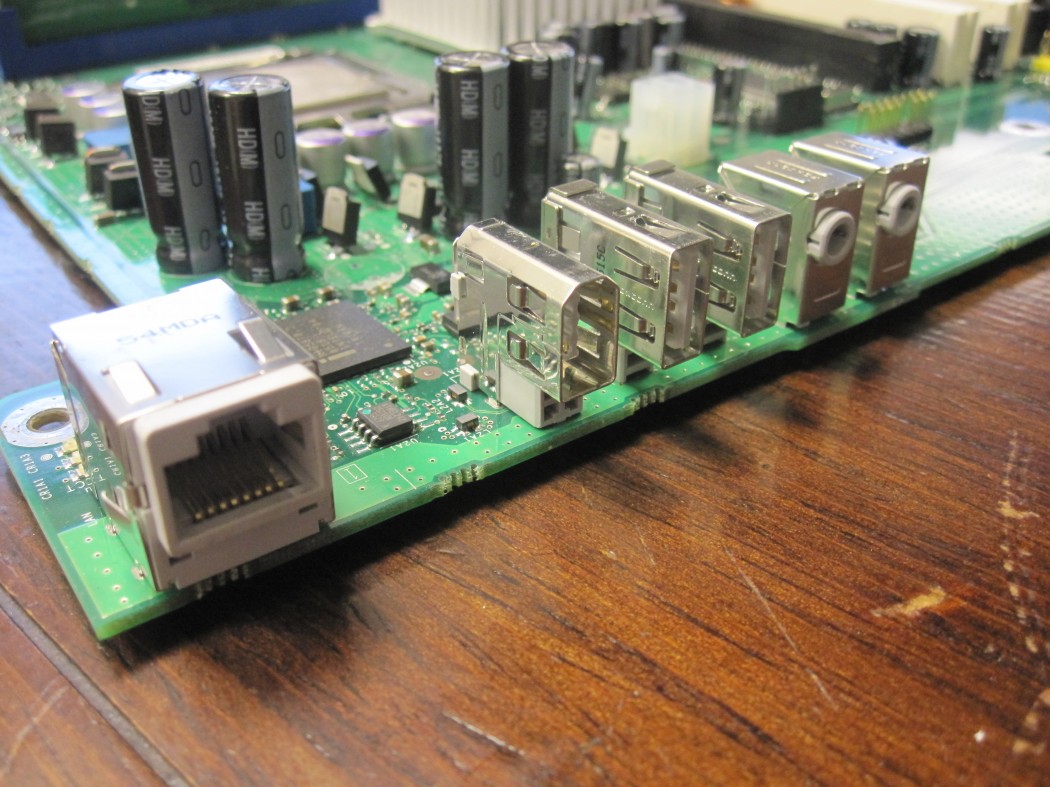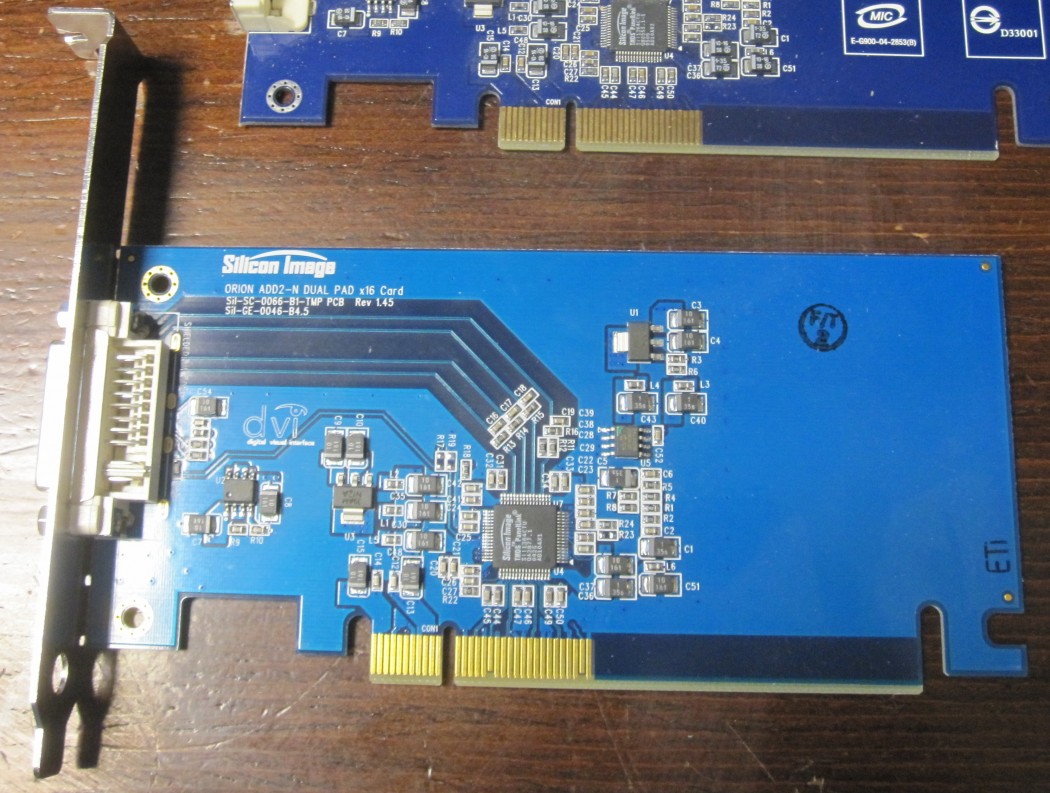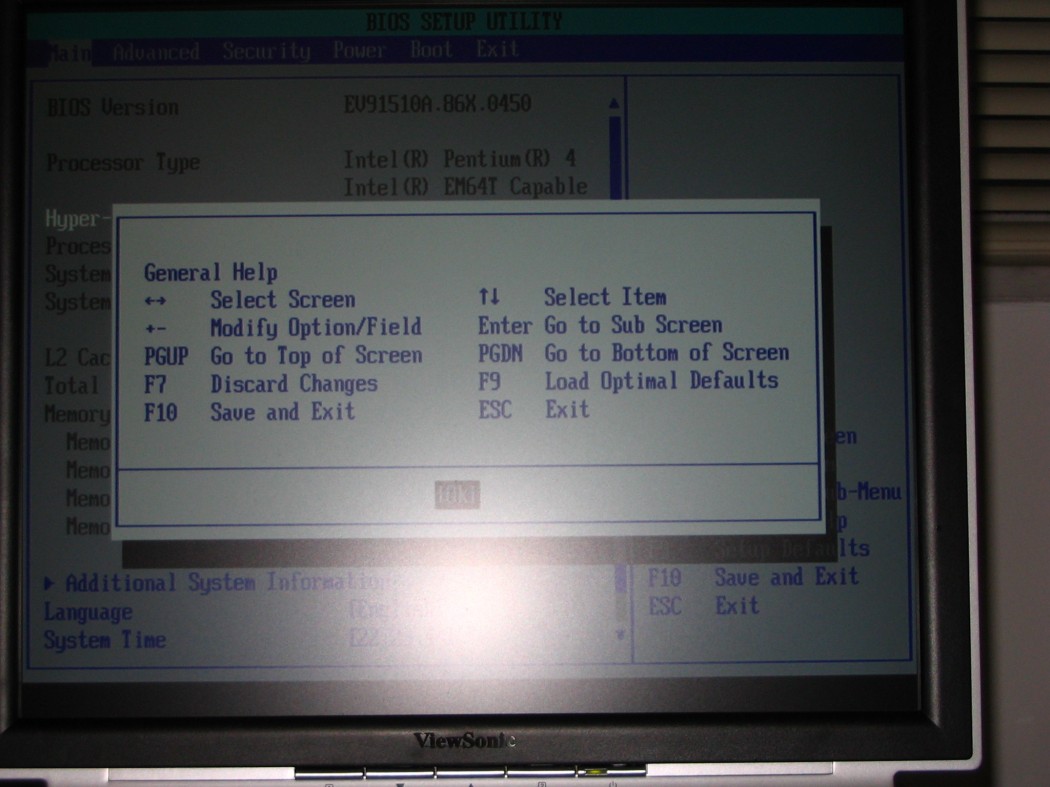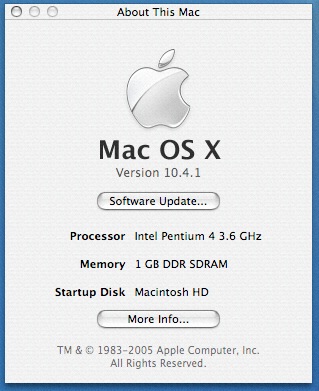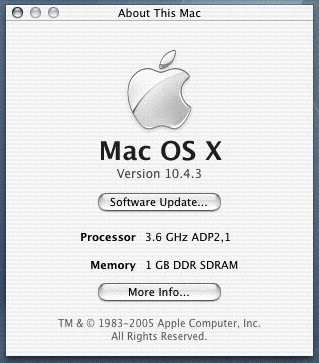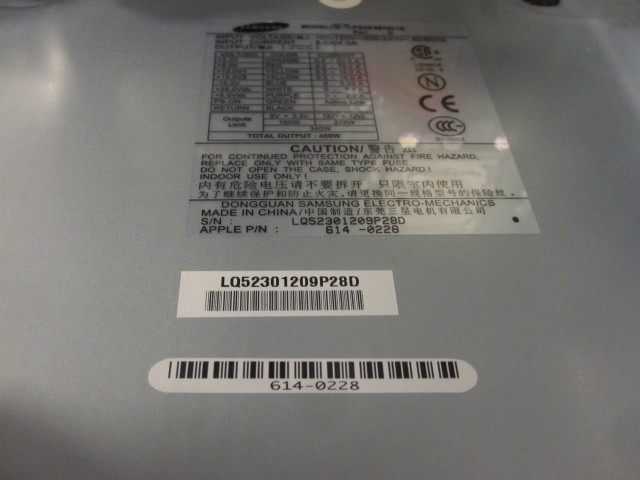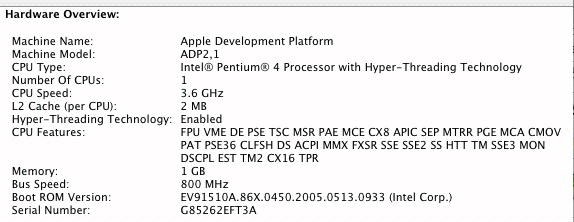The most well-known Apple prototype is the Developer Transition Kit (DTK), also known as ADP2,1. This Intel application testing platform was sold by Apple for $1,000 or, more accurately, leased. Upon the release of the first Intel-based Macs, Apple replaced the machine with a 17-inch iMac.
Steve Jobs introduces the machine.
So, what is the DTK? It’s a PC housed in a Power Mac G5 casing. It features an Intel motherboard (slightly modified EV915), a single-core 3.6 GHz Pentium 4 (Prescott 660) processor with Hyper-Threading, a GMA900 graphics card, and a SATA hard drive. The microATX-sized motherboard is slightly modified for Apple, with an Ethernet port, two USB 2.0 ports, FireWire 400, and two audio outputs. The standard Power Mac G5 ports are blocked.
For the GPU, a PCI-Express x16 « card » is included: it’s an ADD2 that provides DVI output via a dedicated controller, as the GMA900 does not support DVI by default. This chip would later be present in MacBooks, as the GMA950 faced the same issue.
The memory (1 GB base) is DDR2-533, and interestingly, the DTK has a fairly standard BIOS, sourced from Intel. The motherboard also integrates a TPM chip, used to validate the machine at the OS level, preventing the installation of Mac OS X on any PC. In the final machines, Apple switched to EFI, the BIOS successor, and no longer used the TPM chip.
The DTK was delivered with a modified version of Mac OS X Tiger, known as the ‘Marklar’ project. The DTK initially shipped with Mac OS X 10.4.1 and ended its life on 10.4.3, while the first commercial Intel models received 10.4.4.
Steve Jobs testing the DTK.
The tested DTK…
In GeekBench, the (bulky) Pentium 4 doesn’t perform well: with around 2000 points, it is on par with the first MacBook Air or Mac mini, all with high power consumption (a 450 W power supply).
Interestingly, the DTK served as the foundation for some hackintosh systems. The code ADP2,1 is sometimes the identifier for hackintosh systems. Moreover, some developments for the DTK, such as GMA900 drivers or the bootloader compatible with BIOS, were utilized in hackintosh setups.
Today, the DTK is very rare, even though it occasionally surfaces on forums. Not because the machines are rare in absolute terms, but because Apple quickly attempted to retrieve the devices. They were ‘leased’ for a specified period, and developers were supposed to return them at the end of the testing period.
